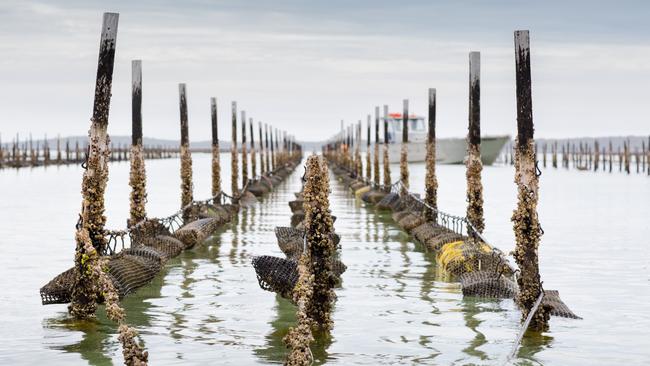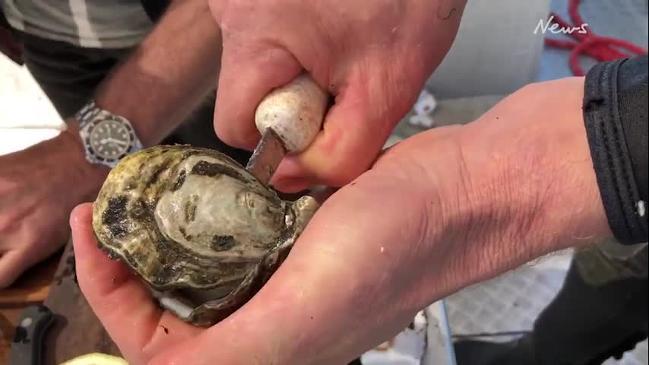Feral oysters to be removed from Adelaide’s Port River in a bid to protect the state’s $37 million industry from POMS disease
A MASS clean-up of feral oysters from the Port River is set to begin as authorities try protect the state’s $37 million industry from the Pacific oyster mortality syndrome.

SA Business
Don't miss out on the headlines from SA Business. Followed categories will be added to My News.
A MASS clean-up of feral oysters from the Port River is set to begin as authorities try protect the state’s $37 million industry from the Pacific oyster mortality syndrome.
Fisheries officers will work to remove all oysters from the Adelaide waterway over the next week, after the deadly POMS virus was discovered in the river, on Wednesday.
Primary Industries and Regions SA has also implemented a state-wide ban on the industry’s 100 farmers from moving oysters between growing regions and out of hatcheries.
PIRSA fisheries and aquaculture executive director Sean Sloan told The Advertiser said the immediate and comprehensive response was critical to safeguard the industry.
“In terms of how we address the population in the Port River, we have a team working on that and we’re likely to go in and to do an oyster removal process,” Mr Sloan said.
“They’re an intertidal shellfish, so most (oysters) you can get to in low tide.
“The standstill between growing regions is likely to be for a week or two while we do testing in each key growing area to make sure they don’t have presence of the virus.”
Mr Sloan said there was recent testing of the state’s eight commercial growing regions, but further samples were currently being analysed for the Stansbury area.
“It’s an area of the state that is based on growing oysters to half of their size and then being moved to places like Coffin Bay or Smokey Bay to finish them off,” he said.
“So it’s one region we need to double check.”

Until now, South Australia - which produces 55 per cent of the nation’s Pacific oysters - was the only POMS-free state in Australia.
The disease causes rapid and high mortality rates in Pacific oysters, spreads quickly, and if introduced, is a serious threat to the oyster farming industry.
The disease decimated Tasmania’s $24 million industry in 2016, which closed the borders to SA growers who had received 80 per cent of their spat (oyster larvae) from the region.
SA’s hatcheries have struggled to keep up with demand, with the industry already battling a 50-70 per cent drop in production until mid-2019.
Mr Sloan said certain factors would work in their favour to, hopefully, contain the virus to Port River, after a cluster of about 30 oysters returned the positive result during routine sampling.
“The two things we have in our favour is that the Port River is an enclosed harbor and we’re starting to come into cooler temperatures,” Mr Sloan said.
“The virus, where it’s presented overseas and New South Wales and Tasmania, has presented in warmer months, so there is a temperature threshold that can bring an onset of the virus.
“The risk we have is if someone picks oysters from the Port River off a pylon and takes them over live to a growing region somewhere else.”
To reduce the risk of the virus spreading, the removal of all oysters, mussels and cockles from the Port River, including for bait or berley, has been banned.
Mr Sloan said PIRSA may also have discussions with Flinders Ports on planned dredging of the Port River, if it posed a risk to spreading the virus.
To find out more about POMS and how fishers can stop the spread of the disease, go to: pir.sa.gov.au


